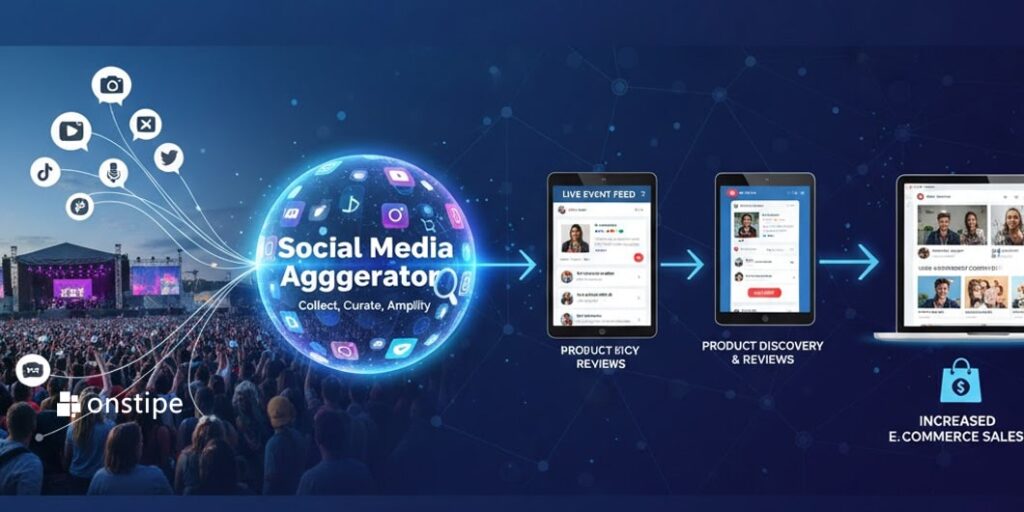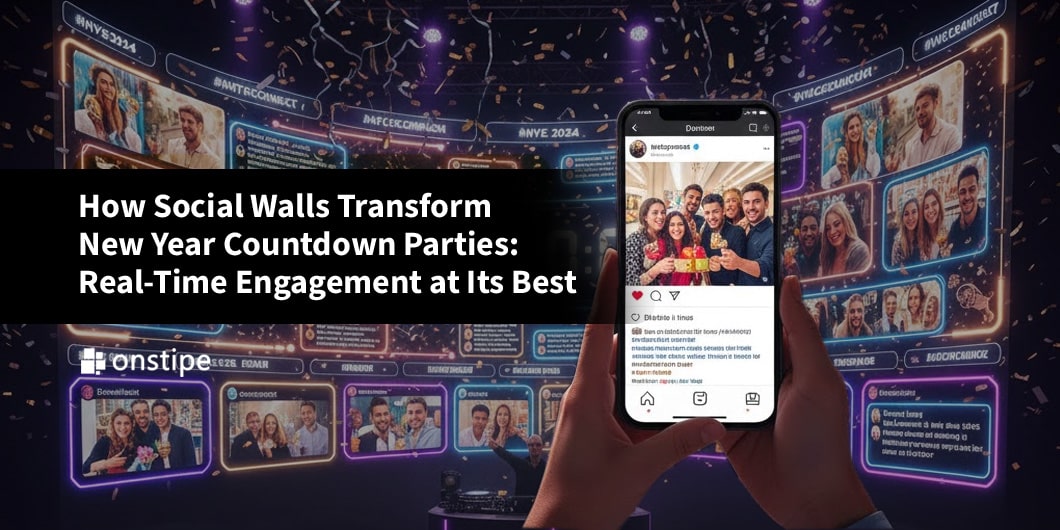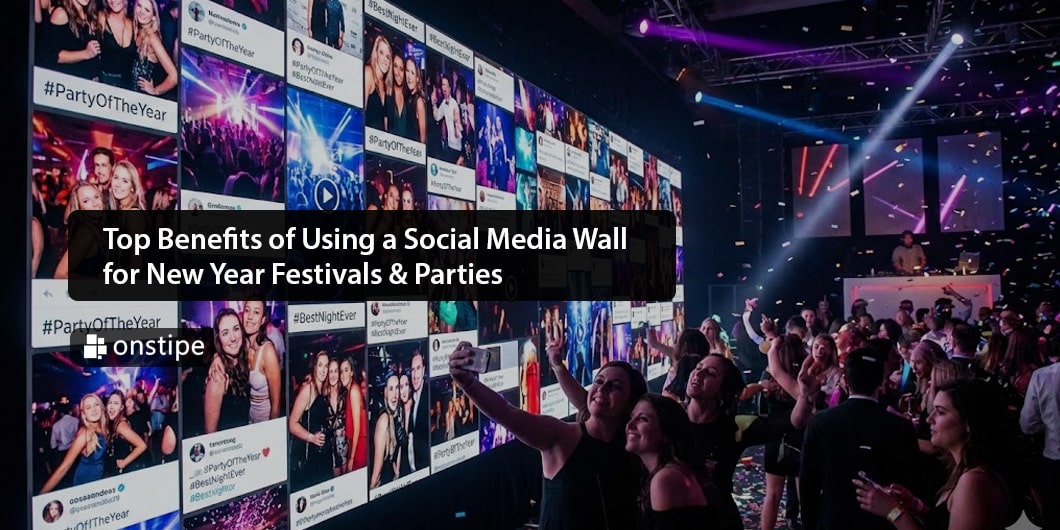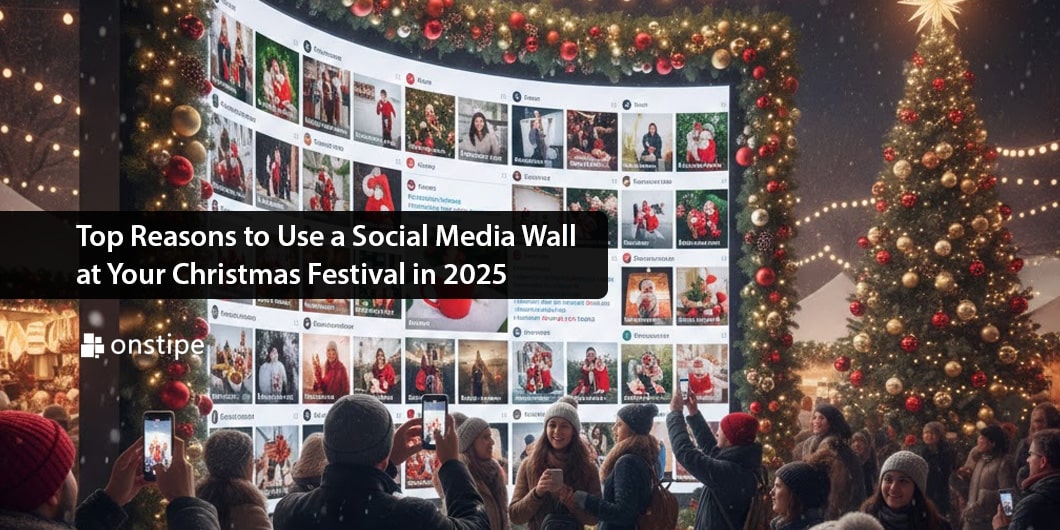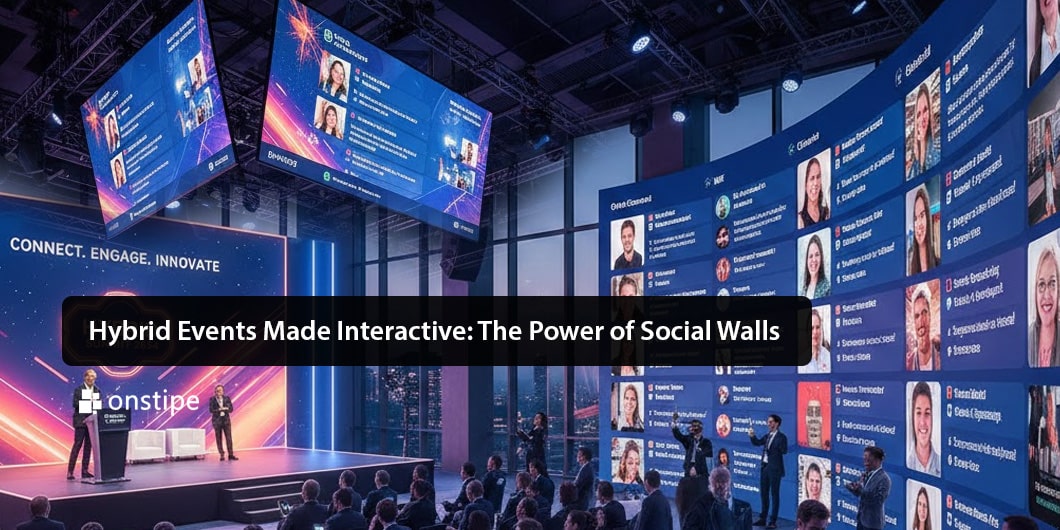In an era where attention is the new currency, brands and organizations must go beyond broadcasts and static web pages. The real magic happens when audiences become part of the story — when they see themselves, their posts or their voices reflected in real time, within the context of an event or a shopping experience. That’s where the power of social media aggregators comes in: tools that pull in social posts, tweets, tags and content across platforms and display them in an integrated, dynamic feed. This article explores the full arc of how social media aggregators serve both live events and e-commerce experiences, why they work, and how to deploy them for maximum engagement.
What is a Social Media Aggregator?
At its core, a social media aggregator gathers content from one or more social platforms — Instagram, X (formerly Twitter), Facebook, TikTok, YouTube, etc. — via hashtags, user mentions, accounts or keywords. It then displays that content in a unified feed, widget, “social wall” or embedded display, often with options for moderation, branding and analytics. Unlike a single embed of a tweet or Instagram post, an aggregator creates a stream of content that updates automatically and combines multiple sources.
For example, tools allow brands to integrate product-tagged posts into e-commerce pages, track performance, enable shoppable media and display real time social activity. Meanwhile platforms like Walls.io or Everwall allow event organisers to create live “social walls” showing attendee posts via hashtags or mentions.
The power lies in the real-time aspect: as soon as a user posts something relevant, it can show up on your feed or screen, turning passive audiences into active participants.
Why Real-Time Matters: Engagement, Authenticity and Fear of Missing Out
Live Events: Amplifying the Moment
Think of an event – a conference, concert, award show, product launch. Attendees often post photos, comments, hashtags. With a social aggregator, you can display social media posts live on large screens or on event websites. This has multiple benefits:
- Attendees feel seen — their posts are displayed publicly, which gives them recognition and builds excitement.
- The event’s social footprint grows: as attendees see posts displayed, they’re motivated to create more content, increasing the hashtag activity and amplifying reach beyond the physical venue.
- The event becomes inherently more dynamic: instead of being a broadcast, it becomes a conversation. The social wall becomes a hub of live interaction and content discovery.
E-Commerce: Social Proof and Real-Time Social Commerce
In the e-commerce world, social media aggregators address a different but equally powerful dynamic: giving shoppers real-world, authentic content at the point of decision. For example:
- Aggregated user-generated content (UGC) such as product photos, reviews, social posts from customers gives prospective buyers social proof that the product works, that people engage with it, that it’s not just your brand saying it.
- Real-time social feeds on product pages allow visitors to see the latest content — new angles, new customers, fresh posts — increasing trust and engagement.
- In more advanced cases, the feed becomes shoppable: posts can tag products and link directly to purchase pages, shortening the conversion path.
In both contexts — events and commerce — what matters is the timeliness and authenticity of the content, the visual diversity, and the sense of participation: “I’m part of this moment”, “People like me have bought it and posted about it”.
The Convergence: From Live Event to Shoppable Experience
What’s fascinating is how these two worlds — events and commerce — increasingly converge via social media aggregators. Consider these scenarios:
- A brand launches a new product via a live event (say a fashion show, tech launch, or influencer-led reveal). You set up a social wall pulling in the event hashtag, attendee posts, influencer coverage. At the same time, you embed that same social feed on the product’s e-commerce page. Website visitors see real-time posts of people using or reacting to the product. The live event drives social content which fuels the commerce page.
- During a live shopping stream (via Instagram Live, TikTok, or on-site video), comments, posts and user reactions are aggregated in real time and displayed alongside the shopping content — turning the shopping session into an interactive event. The purchase becomes part of the social moment.
- Events that are hybrid (both physical and virtual) benefit enormously: virtual attendees can see the “social wall” updating with posts from physical attendees and vice-versa; remote guests feel part of the action, and all posts feed into the commerce or brand page in real-time.
In short, aggregators become the glue that links live engagement, social proof, community content, and commerce — driving higher participation, deeper brand connection and measurable conversion.
Key Capabilities of Social Media Aggregators
To succeed in this space, the aggregator needs certain capabilities:
- Multi-platform integration: The ability to pull content not just from Facebook or Instagram, but from multiple sources (X, TikTok, YouTube, etc.).
- Real-time or near-real-time updates: The feed must refresh automatically so that fresh posts appear without manual intervention.
- Customizable display: Ability to design the look and feel to match brand identity or event theme.
- Moderation and filtering: To keep the content safe, on-brand and relevant (especially important during live events).
- Analytics and performance tracking: To measure reach, engagement, clicks, and conversions.
- Shoppable media or product tagging (for e-commerce use cases): linking social posts to product pages.
These features allow brands to not just display social content, but leverage it as a strategic asset.
Benefits for Brands, Events and E-Commerce
For Events
- Drives more attendee engagement: as attendees see their posts live, they participate, creating a virtuous loop.
- Extends reach: The hashtag content and aggregated posts go beyond the physical space, creating buzz and extending brand impact.
- Increases time in event space or website: Visual social feeds encourage exploration, interaction, and curiosity.
- Provides measurable metrics: number of posts, hashtag uses, clicks, which can feed into ROI reporting.
For E-Commerce
- Builds brand trust and authenticity via UGC: potential customers see real people engaging with product or brand.
- Improves conversion rates: Social proof and fresh visuals reduce hesitation, especially for first-time buyers.
- Keeps website content dynamic: Instead of static product pages, you have live feeds helping to reduce bounce rates and increase dwell time.
- Shortens purchase journey: Shoppable feeds reduce clicks between discovery and purchase.
- Enables cross-channel amplification: Social posts link back, website displays encourage posting, loop continues.
For Both
- Efficient content management: Aggregators automate the pulling and display of social content, saving time compared to manual post embedding.
- Better storytelling: Combining real-time social with branded content or commerce creates immersive experiences rather than static ones.
- Insights and optimisation: Aggregator analytics help refine campaigns, event formats, product page layouts and audience targeting.
Real-Life Use-Cases
Let’s look at some examples:
Event: Live Conference
Imagine a tech conference. You promote the event hashtag. At the venue you have large screens showing live posts via the aggregator: attendee selfies, speaker quotes, behind-the-scenes, tweet reactions. At the same time the event website shows a live feed of posts and updates. After the event, the feed remains embedded on the post-event page to show the buzz and act as social proof for next-year registrations.
Product Launch / Commerce
A fashion brand launches a new product line. They embed a social aggregator on the product page that pulls in Instagram posts from customers wearing the new apparel tagged with the launch hashtag. Visitors browsing the page see real customers in real use, boosting authenticity. The feed also features influencers and styled posts. Posts link to buy, driving conversion.
Hybrid Live Shopping
A brand uses a live stream on its website: a host presents new arrivals, answers questions in chat. Meanwhile, a social aggregator on the page pulls in user posts (pictures of the products, comments, hashtags) from Twitter, Instagram and TikTok. The host references audience posts (“Thanks, @User123 for your look!”). Viewers feel included, engagement rises, and because content is real-time, the shopping event becomes communal rather than transactional.
Implementation Considerations & Best Practices
Set Clear Objectives
- Decide whether you use the feed for engagement, brand awareness, commerce conversion, or event amplification.
- Define metrics: hashtag mentions, feed click-throughs, conversion rate uplift, time on page, bounce rate improvement.
Choose the Right Tool
Look for features aligned with your objectives: multi-platform support, moderation, analytics, shoppable capability. According to industry comparisons, aggregators outperform simple embeds in engagement easily.
Design and Brand the Experience
- The aggregator feed should visually match your brand or event theme.
- Position it in an ideal location: for events, on screens or walls; on e-commerce, near product visuals or reviews.
- Make sure it’s responsive and mobile-friendly.
Prioritise Performance
- Real-time feeds can still slow down a site if poorly implemented. Use lazy-loading, limit feed size, ensure caching and efficient scripts.
- Monitor site speed and load times, especially for e-commerce pages where performance is critical.
Moderate and Curate Content
- Pre-define the hashtag(s) or keyword(s) you’ll track.
- Configure moderation to remove off-brand or inappropriate posts.
- For events, you might want to feature only selected posts or VIP posts.
- For commerce, ensure the UGC aligns with brand standards and product imagery.
Combine with Call-to-Action
- On product pages: ensure social posts link to purchase path or include “Buy now” or “See more” CTA.
- At events: include CTA inside feed or adjacent to it (“Share your post using #EventHashtag”, “Join the conversation”).
- Use gamification or incentives: e.g., “Get featured on the big screen by posting with #YourHashtag”.
Track, Analyse and Iterate
- Use analytics to monitor which posts drive clicks, which hashtags generate most content, and whether feed placement correlates with improved conversion metrics.
- For events: track hashtag volume before, during and after the event.
- For commerce: compare conversion rates on pages with and without the aggregated feed.
Be Mindful of Privacy and Platform Rules
- Ensure only public posts are aggregated (respect platform terms).
- If using user imagery/videos, consider permissions if needed.
- For minors or sensitive content, ensure your moderation handles potential issues.
Challenges and Pitfalls to Consider
- Over-dependence on the aggregator: A social wall or feed is not a substitute for strong core content — you still need a compelling event agenda or product narrative.
- Feed going stale: If the hashtag or posting activity drops, the feed will look empty or outdated, which hurts credibility.
- Performance issues: Heavy script or unsophisticated embedding can slow pages or event apps.
- Off-brand content: Without moderation, posts may display irrelevant or harmful content.
- Measurement complexity: Attribution of lift (e.g., how much of conversion was due to the feed) can be challenging without good analytics.
- Platform changes: Social networks change APIs, embed rules or hashtag visibility; aggregators must adapt.
By acknowledging these, you can build a more robust implementation.
Future Trends: What’s Coming Next?
- Greater shoppable social aggregator feeds: As commerce continues to integrate with social media, expect aggregators to support more direct purchase links, true “social-commerce hubs” embedded in sites.
- Real-time analytics and AI moderation: Aggregators will get smarter — detecting best posts, trending imagery, sentiment and auto-surfacing them to maximise engagement.
- Augmented reality (AR) and immersive social walls for hybrid/virtual events: Attendees could interact with social displays in VR or overlay digital feeds onto live spaces.
- Better integration with livestreaming and influencer content: The line between event, social and commerce will blur further; every live session could channel a real-time social wall.
- Personalised social feeds on e-commerce pages: Instead of one generic feed, sites may dynamically surface UGC tailored to the visitor’s demographics or browsing history.
Conclusion
From the roaring energy of live events to the quiet click-throughs of e-commerce pages, social media aggregators are enabling the real-time connection that modern audiences crave. They take what was once passive — a website, a product page, an event agenda — and superimpose the living social conversation around it. They turn attendees into creators, visitors into participants, browsers into buyers.
Whether you’re organising an event, launching a product, or building a digital experience, the message is the same: show the people, show the moment, show the impact — in real time. Embed a feed, curate it, amplify it — and watch as engagement and authenticity take over.
The future of brand experience is dynamic, participatory and social. A well-executed aggregator is not just a feed — it’s the heartbeat of the moment.

